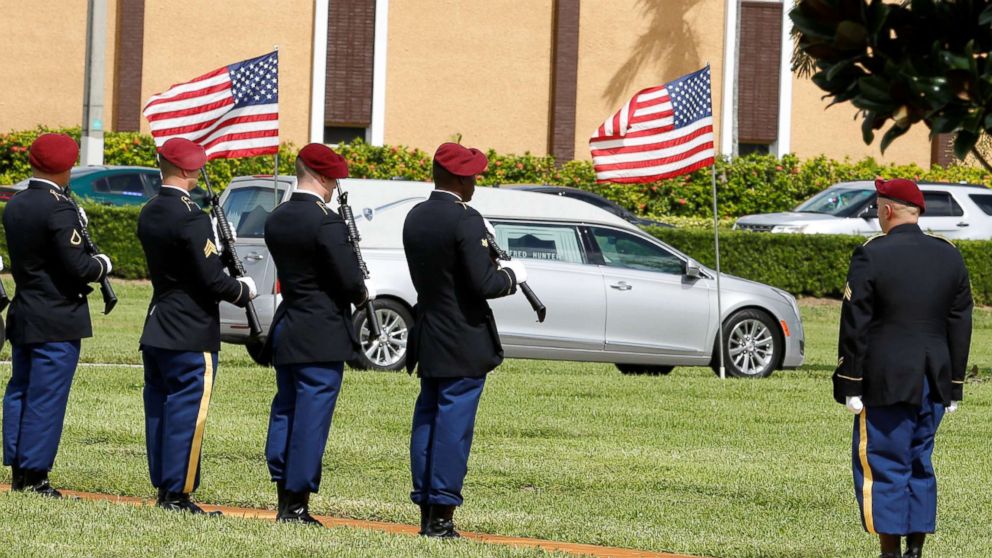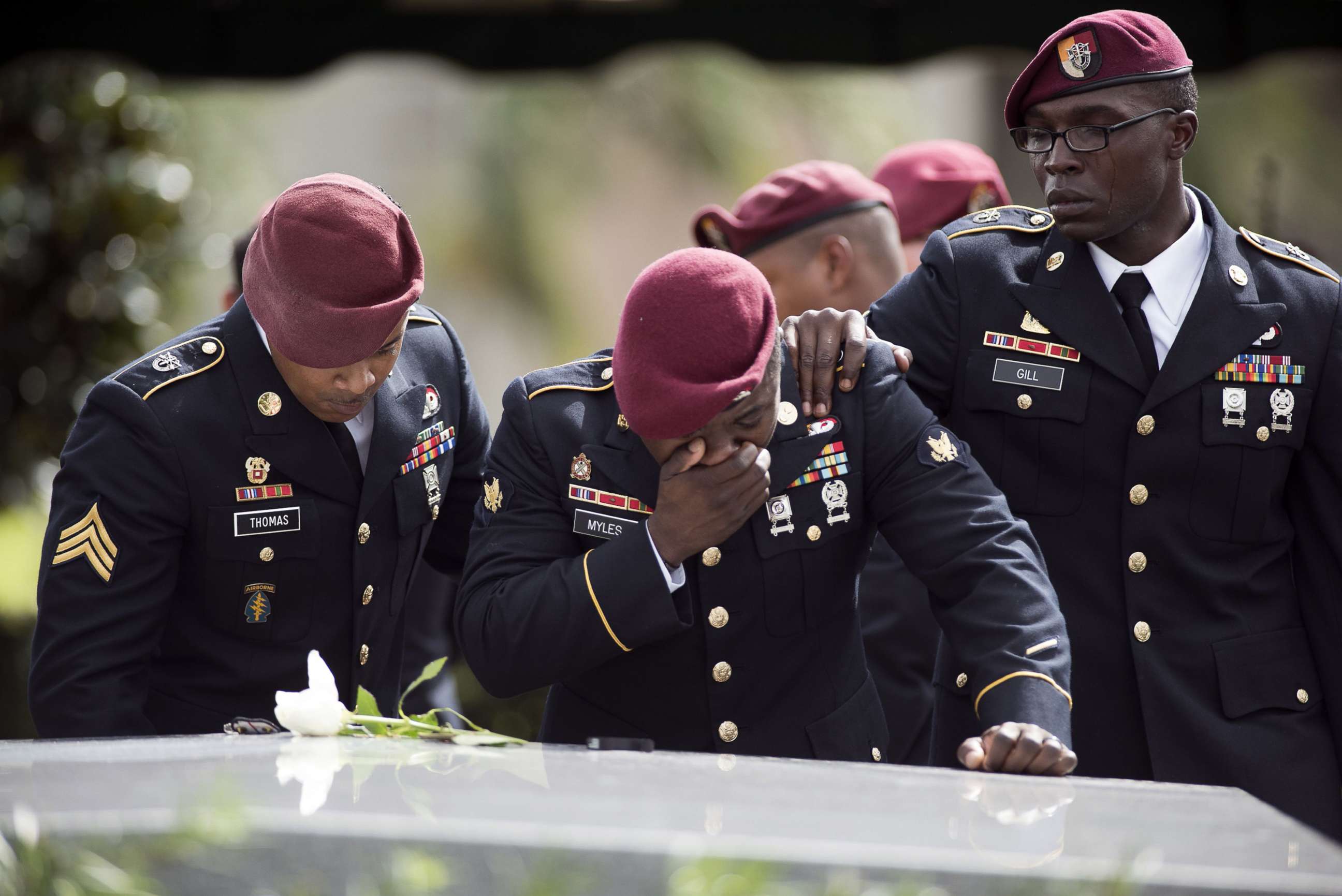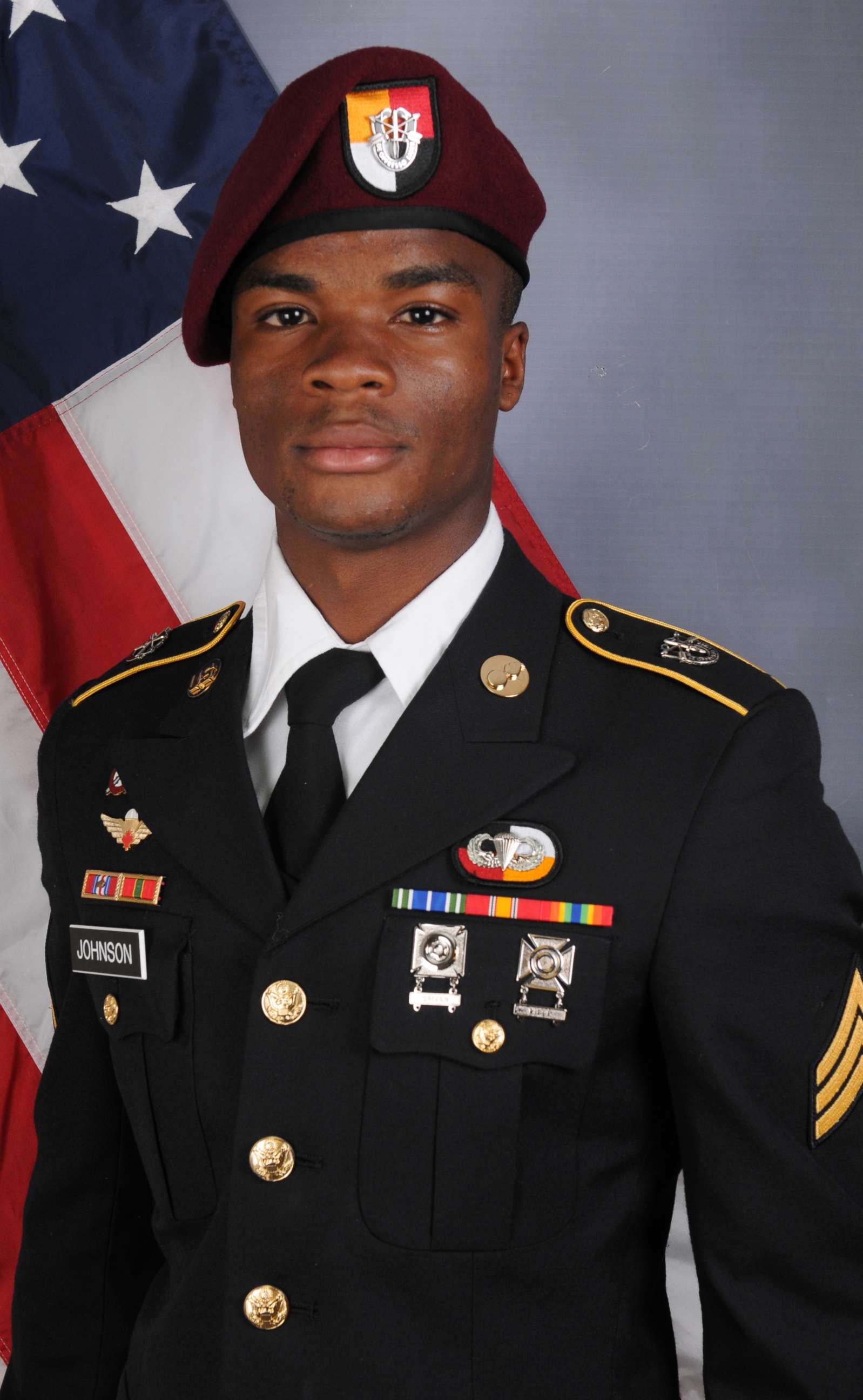'He died fighting for his brothers,' Niger ambush survivor says of fallen US soldier
ABC News has learned chilling new details about the Niger mission gone wrong.
— -- Nearly three weeks after the deadly ambush on U.S. Special Ops forces in Niger, ABC News has learned chilling new details about the mission gone wrong from a survivor of the attack and a senior U.S. intelligence official.
Their accounts, provided in separate interviews, raise questions about why a second, potentially more dangerous mission was tacked on late in the day even after a second team that was supposed to join them was unable to do so.
What was started as a reconnaissance mission to meet with local leaders turned into a kill-or-capture mission aimed at a high-value target, according to both sources.
That target – codenamed Naylor Road – has ties to both al Qaeda and ISIS, according to the intelligence official.
According to multiple intelligence sources, this target is one of the U.S.’s “top three objectives in Niger,” one that the U.S. has been “actively pursuing.”
But that change in plan meant that the team was out for over 24 hours and put them at greater risk.
“They should have been up and back in a day. Because they were up there so f------ long on a mission that morphed, they were spotted, surveilled and ultimately hit,” the official said.

Despite being massively outnumbered, the American and Nigerien troops held their own -- including Sgt. La David Johnson, who was killed in the ambush, the sources told ABC News.
“He was the best kid you could ask for,” the survivor said of Johnson, who fought back the militants with machine gun fire from the back of a pickup truck, before grabbing a sniper rifle and continuing to shoot.
“The guy is a true war hero,” the survivor added. “I really want his wife and kids to know that.”
The team of 12 Americans set out with 30 Nigerien soldiers in the early morning on Oct. 3, according to the sources and confirmed by Gen. Joseph Dunford, chairman of the Joint Chiefs of Staff, who on Monday offered the first official timeline of events for the ambush in Niger.
They rode in six to eight vehicles, three of them American. They were headed from Niamey, Niger’s capital, to a village 85 kilometers to the north, called Tiloa.
Their pre-mission threat assessment never considered the possibility of 50 to 60 enemy combatants attacking them, according to the official. That matches what Dunford told reporters on Monday. He also added that the leaders on the ground assessed that contact with the enemy was unlikely.
On their way back, the team received a call from the base back in Niamey, asking them to turn around and kill or capture a high-value target who is a known al Qaeda and ISIS operative, according to two senior officials.
There was “high confidence” that the target was in the area, the sources told ABC News. A second U.S. Special Forces team was directed to meet up with their patrol, but when they could not, the original 12-member team and their Nigerien partners were told to proceed anyway.
The team arrived at the target location in the early morning hours of Oct. 4, but found nothing. They burned the remnants of the abandoned campsite and headed back south as the sun came up, stopping back through a nearby village called Tongo Tongo around 8:30 AM.
There, the Nigerien force requested they stop to eat, while U.S. soldiers met with a village elder, who was “obviously and deliberately trying to stall them,” according to the official.
“He was definitely stalling as long as he could to keep us there,” the survivor said, saying he had an entourage, showed the unit a child with an illness, and even grabbed a goat he wanted to prepare for them.

But the unit suspected something was definitely wrong when they saw two motorcycle riders watch them and race out of the village.
The “hair on the back of their necks stood up,” a U.S. official told ABC News.
It was around midmorning or midday by the time the team departed the village. According to the survivor, they had only gone a few hundred yards when they came under fire from machine guns, mortars, and rocket-propelled grenades.
An assessment is still underway to determine who ambushed the patrol, but the survivor said it is “absolutely” possible that the high-value target was involved. Dunford said Monday the Pentagon assessment is that “it is an ISIS-affiliated group.”
The unit began returning fire, including with their own machine guns mounted on two of the American vehicles, according to the senior official.
One vehicle was hit by a mortar and another vehicle was disabled by gunfire.

Exactly how and where Johnson died remains unclear, but the survivor praised him as a “war hero” who went “above and beyond” to defend his team.
“Without a doubt, his courage and bravery in action that day were above and beyond expectation. He died fighting for his brothers on his team. You can quote that verbatim,” the survivor added. “He grabbed any and every weapon available to him. The guy is a true war hero.”
One hour into the fight, the unit requested support – with an unarmed drone reaching them in minutes, according to Dunford.
The senior intelligence official credited the French forces who responded with “saving our bacon.”
“The French saved our men. Yes, we lost four. But we would have lost everybody if it wasn't for the French,” the official told ABC News.
Within an hour of the calls – and two hours after the firefight started – French Mirage fighter jets came overhead, Dunford confirmed.
They flew low to scare off the ISIS-affiliated fighters. They did not drop bombs, however, because “they didn’t know exactly where our guys were situated,” the official said.
Shortly after, French Special Forces from Ouagadougou in neighboring Burkina Faso arrived on attack helicopters, each with one or two U.S. Green Berets. French helicopters evacuated the wounded to Niamey, Niger’s capital.
But it wasn’t until two days later on the evening of Oct. 6, according to Dunford, that Johnson’s body was found. The top general denied that the U.S. ever left him behind, arguing that French, American, or Nigerien troops were in the area at all times until his body was recovered.
The survivor described an all-out effort to find Johnson during those 48 hours, saying he was missing, but presumed alive.
“Until his death was confirmed, every asset was devoted to recovering him,” the survivor said. “We threw everything we had at it… Literally hundreds of people were focused on getting La David back.”
It was Nigerien forces that eventually found Johnson’s body, according to Dunford.
The White House was notified as soon as there was a report of a missing soldier, according to Dunford – meaning some time on the evening of Oct. 4.




